Search Results
Fine Jewelry University Articles matching: “Natural”
Showing only FJU Article results. Click here to show all results.
Fine Jewelry University (Show All FJU Articles)
-
The Birthstones
…tears of Venus, the Roman goddess of love. Pearls are recognized as the emblem of modesty, chastity and purity. A pearl is the product of an oyster’s defense mechanism. When a foreign irritant is introduced either by man (cultured) or naturally, the oyster immediately surrounds it with layers of a substance called nacre. Pearls form directly from the hand of nature, ready to be admired and worn to display all their beauty. Alternative gemstones for June include moonstone, …
-
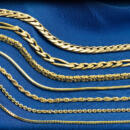
Types of Necklace Chains
… are so popular. PROS Durability – The redundant links in a solid rope chain means that even if one or two of the links fail, the chain can still hold together. Flexibility – Rope chains are very flexible and easy to wear. They’re naturally twisted, so you typically don’t have to worry about straightening them out. Classic Look – The rope chain is one of the most timeless chains styles there is. CONS Serviceability – It can be difficult to repair rope chains cleanly and …
-
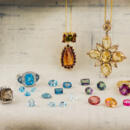
Gem in the Spotlight: Topaz
…re both crazy, it’s like a beautiful peach.” Then, a passerby contributes, “You all are nuts, it’s like a rainbow with all the colors at once.” And of course, all of them are right. History and Lore Topaz in its pure form is naturally colorless, clear like a diamond. The famous “Braganza Diamond” was thought to be the largest diamond ever found (prior to the Cullinan Diamond) at 1,680 carats and was set in the Portuguese crown jewels as such. It wasn’t until many years …
-
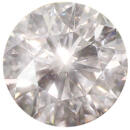
Diamond Buying Guide: The 4 C’s
…gold, it may appear to be much more yellow than it is. Fancy color diamonds are a fun, non-traditional option. While natural fancies can be very rare and extremely expensive, we now have the technology to permanently color a white diamond to…imagine. You can read more about fancy diamond colors here. Clarity Most diamonds contain inclusions. Inclusions are natural birthmarks and useful as identifying characteristics. Clarity grading is done with 10 power magnification. The …
-
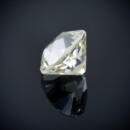
The History of Diamond Cuts
… to change their shape. So, the Romans wore uncut diamonds. One of diamond’s remarkable attributes is that the natural diamond crystal is beautiful without any human modification. Diamonds normally form in the octahedral shape which looks … like two pyramids stuck together at the base. Naturally, the first attempts to enhance diamonds were to polish the natural gem. The “point cut” is the polishing of a natural octahedral diamond. Interesting fact #1 about diamond cuts: …
-
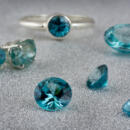
Gem in the Spotlight: Blue Zircon
… the manmade diamond simulates were made, the colorless version of zircon was used in jewelry to mimic diamond. Why? Natural zircon is known for its scintillation, brilliance, and flashes of color or fire just like diamond. Zircon also is … name for colorless Zircon. Starlite is the name for the blue gem variety of Zircon. The color of Starlite is rarely natural, and is almost always heat treated. Of course, the blue form of Zircon is also called, imaginatively, Blue Zircon. …
-

How Are Lab Grown Diamonds Made?
… Temperature Diamonds How does nature form diamond crystals? Nature does it very deep underground. Diamond growing naturally takes place about 100 miles below the earth’s surface. Why? Because that is where the conditions of extremely high …. Both HPHT and CVD diamonds tend to exhibit strong and unusual fluorescence characteristics when compared to natural diamonds. This fact, while not generally detrimental to the appearance of the diamonds, is quite useful when identifying …
-
Frequently Asked Question about Jewelry
…. They are making the diamonds both more transparent (whiter) and more colorful. Some colors are more vibrant then natural diamonds. Next, some are changing the clarity of diamonds with laser drill and fills. The new fills are getting harder… on the diamond. Color is actually looking for the absence of color or transparency. Clarity is inclusions and natural birthmarks of a diamond and is useful as identifying characteristics. For more information see the Diamond Buying Guide . …
-
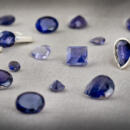
Gem in the Spotlight: Iolite
…violet. Unlike many other popular gems, iolite cannot be heat treated to enhance its color. The color you see is the natural color of the stone when it was first discovered. This adds value to many gem buyers who don’t want a treated …refers to iolite’s pleochroic nature. iolite cannot be heat treated to enhance its color. The color you see is the natural color of the stone when it was first discovered. Coming in at 7 to 7.5 on the Mohs hardness scale, iolite is a …